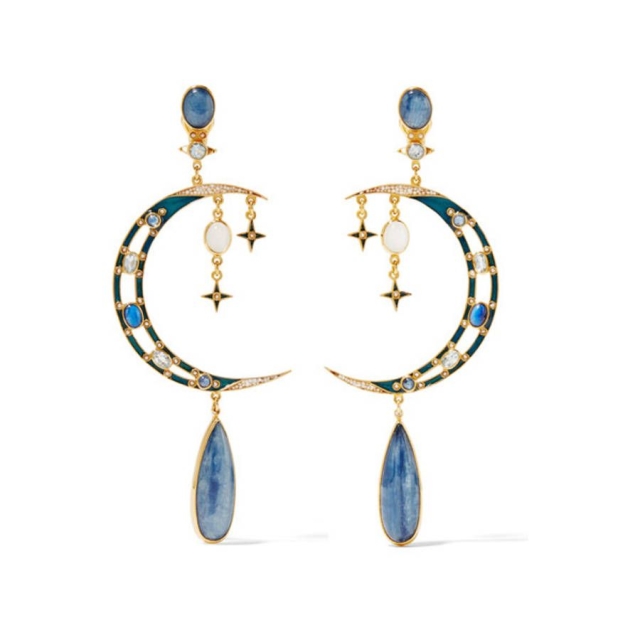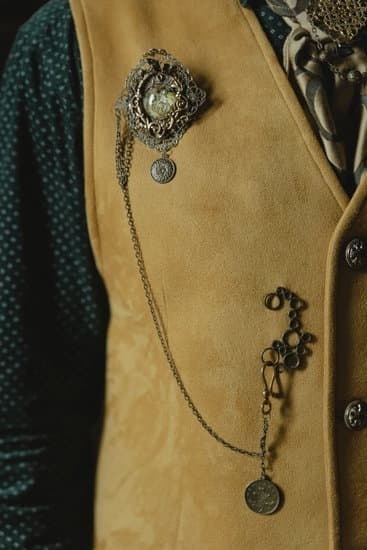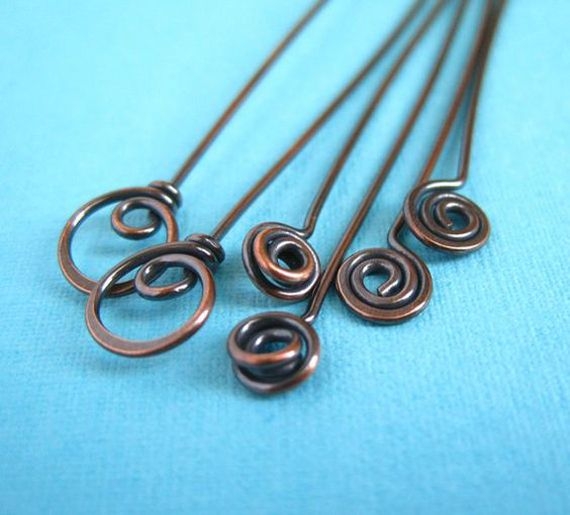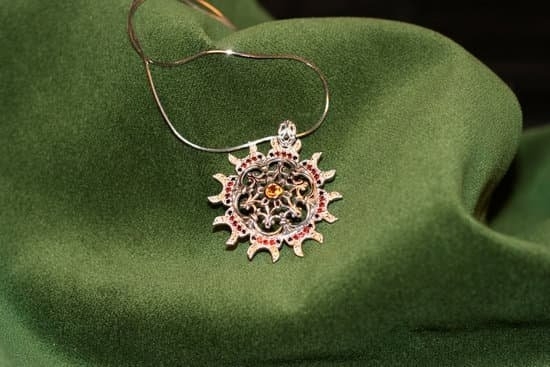Making jewelry out of recycled materials is an exciting way to upcycle items we would normally discard into beautiful and eco-friendly accessories. Upcycling has become popular in recent years as a means to reduce waste while also creating fashion statements with handmade items.
This method of jewelry crafting may sound intimidating at first, but the process is actually quite simple and easy to learn. Not only does it result in one-of-a-kind pieces that are sure to draw attention, but by using the proper techniques and materials, these creations can provide you with quality heirloom jewelry for generations to come.
Supplies Needed for Upcycling Your Jewelry
When makingjewelry from recycled materials, there are a few key pieces of equipment and supplies you will need in order to create high quality pieces. To begin with, you will need something strong and heat resistant to hold your design once it is completed.
Beading boards or nesting trays are ideal as they provide great angles for working on different parts of the item simultaneously. As for supplies, wire cutters and pliers will be incredibly helpful when snipping chain links or bending wire around shapes.
You may also want a variety of decorative beads that match upcycled objects such as buttons or glass bottle caps. If some finishes need rebuilding, you can use nail polish or clear coating treatments for extra protection. Lastly, ensure you have all the tools readily available like glue guns or string so that everything is taken care of before starting your project.
Conclusion: Techniques & Ideas to Make Jewelry Using Recycled Materials
Now that handy tools and materials needed have been compiled together, the fun part begins – assembling your masterpiece. With creative ideas like turning an old belt buckle into a necklace pendant or using old silverware handles as earrings – get inspired with whatever object you find feel free to test out any combination of items that catch your eye until each piece feels complete.
Also remember practice makes perfect-take some time to get a good feel for cutting straight lines with the wire cutter or keep practising wrapping wire around shapes until fairly secure – it’s worth taking risks while designing your one-of-a-kind jewelry item from recycled material so don’t be afraid. With patience and dedication learning how to make jewelry using recycled materials can open up an entire world of possibilities unique designs.
Types of Recycled Materials to Use
Making jewelry using recycled materials is a great way to bring a unique twist on a classic fashion trend. It’s also sustainable and eco-friendly, since you’re reusing items that already exist. With the right resources and tools, anyone can create fashionable pieces out of ordinary objects found around the home or gathered from thrift stores or garage sales.
One of the most common types of materials to use in recycled jewelry are items commonly found in any household such as wire hangers and buttons, plastic bottle caps, keys, antique spoons, bottle tops, corks and old cutlery. However twine rope cords , wood beads for jewelry projects are all good start if you don’t have time to sift through junk piles.
Another excellent source for creative material is metal parts such as washers, nuts, bolts, springs etc which look good when combined with various colors of suede leather cord. You can bend them into shape with simple pliers or craft punches to create interesting freeform pieces.
Another option is small computer parts such as wires and resistors that can be soldered together to assemble modern cyberpunk style jewelry items. Whatever type of material you decide to use; always take into account ease of manipulation for best results without stressing yourself during the construction process.
Preparing Your Materials
Making jewelry from recycled materials is a great way to turn something old into something new. Before you can begin crafting, however, you will need to prepare your materials accordingly. Depending on the source of the items-whether they are donations, found treasures or simply scavenged objects-they may need to be sorted, cleaned and polished before they are ready to be transformed into a beautiful piece of jewelry.
The first step in preparing recycled materials is sorting through them thoroughly until the desired items have been identified and separated from the rest. One effective method for doing this is creating different bins or tubs labeled with different types such as, ‘metal parts’, ‘plastic pieces’ and ‘odds and ends’. This will make it easier to identify appropriate components for your project later on.
Once all of the required materials have been collected together for a jewelry project, it is important to clean them properly. Reusing these supplies does not mean neglecting basic hygienic practices; leftover grime from an item can transfer onto your body when wearing the jewellery which could potentially cause skin irritations or other more serious health issues.
To thoroughly clean items such as buttons, coins and charms, use warm water and soap that has been specifically designed for cleaning delicate objects. If an item has excessive amounts of dirt on it you can use soda crystals or baking powder instead of harsher substances like bleach.
After all donated items have been sorted out and cleaned up individually, they now need to be shining again so that their beauty can shine through once crafted into jewellery pieces. This part of preparing recycled materials is easy but time consuming; depending on the material being used they can either be buffed with a cloth or even polished in an ultrasonic machine if available with special tools designed for this purpose in mind.
This process allows everything that is used in jewellery making to look as good as new – aging only enhances its character – before being carefully crafted into an eye-catching necklace or bracelet.
Making a Plan and Designing Your Jewelry
Before beginning work on your jewelry project using recycled materials, it is helpful to make a plan and determine the design of what you hope to create. Start by collecting interesting recycled items that you think would make great pieces of jewelry – let your imagination run wild while sourcing materials.
Consider what shapes will naturally come together harmoniously, and ask yourself whether the overall balance of the piece you have in mind will be visually appealing. Proportion, color, scale, texture, form and line are all important considerations when coming up with your design.
Next, take stock of all your various pieces and ask yourself what sort of abrasive or protective layers may be necessary for each component. This step is vital in order to avoid doing any scratching or damage to the pieces during assembly. For example, beads from recycled glass will need a layer of protection so they do not scratch against heavier metallic components like pendants when the finished item is worn around the neck.
When piecing all these components together there comes a certain point at which you may either surprise yourself with creative solutions or feel frustrated due to lacking cool resources for joining pieces. Take this part slowly and experiment with hack methods until you find something that encloses/secures your pieces together sufficiently and safely. Regular pliers typically provide enough grip and pressure for many types of materials and can help fasten associations securely.
You can also use small screws through previously drilled holes in order to join two assemblies that wouldn’t normally have contact points between them otherwise. Using adhesive such as epoxy glue or clear nail polish can be generally suitable for most surface adhesion needs but always check compatibility first.
Once assembled properly, setting aside some finishing touches is ultimately necessary for creating more polished looking bracelets and necklaces; finally add a polishing compound if needed before presenting your new beautiful piece of jewelry.
Jewelry-Making Basics
Jewelry making is an art form that has been around for centuries and continues to evolve with new techniques. Whether you are a beginner or a skilled craftsperson, there is much to learn about the various tools, techniques and materials used to create jewelry designs. Knowing the basics of jewelry-making will help you become better equipped to design your own pieces that are both beautiful and functional.
When beginning a new project, it is important to decide on a material for your design. This could range from recycled glass beads, shells and plastic to precious stones, gold or silver. Depending on the type of material chosen, certain tools may be necessary when crafting the item.
For example, if working with glass beads or wire, needle nose pliers may be needed for proper fitment and adjustment of parts. Other common tools used include hammers for flattening metal elements and shaping pieces such as rings and earrings; drawplates for creating strands of thin wires; burnishers for finishing off prongs on settings; as well as saws for cutting metals.
Finally, it is essential to decide what application techniques one will use to construct the jewelry piece-or combination of techniques depending on how complex the design may be. A few basic techniques include soldering by heating two metals together or stringing beads by knotting them onto thread or wire which can be connected through crimps or jump rings etc.
If working with soft metals such as copper or brass, you could explore techniques like stamping to add texture or patina work such as oxidation which creates colorful depth in select areas of the piece being made.
These are just some of the basics involved in creating original jewelry designs using recycled materials but with these fundamentals under your belt you can take pride knowing that you can craft personal meaningful items from nothing more than discarded materials sourced from around you.
Constructing Jewelry Pieces
Making jewelry from recycled materials is a great way to reduce waste and create something unique. While buying new components is an option, it can be expensive and has the potential to be a bit time consuming when looking for just the right thing.
Working with recycled materials often involves using different tools and techniques, but with practice, any novice DIYer can turn recycled items into stunning pieces of jewelry. To get started on this eco-friendly crafting project, all you need is some free time and patience.
The first step in creating handmade jewelry with recycled materials is joining pieces together. This can be done by either shaping metal components together or attaching multiple elements with rivets or soldering. Rivets are great for securely holding two items together while staying visually subtle; simply take two pieces of material, line them up as desired, place a rivet over top of them, then spread the ends of the rivet apart to affix the components securely in place.
Soldering works similarly, but requires more accuracy due to its semi-permanent bond; heating up two materials will result in a strong connection if done correctly. No matter which joining method you prefer, make sure that your work area is clean and make sure that your tools are suitable for whatever task you’re undertaking so that your project turns out successful.
Next comes fastening different elements into place after they have been connected; there are a myriad of options here such as jump rings, clasp closures and safety catches depending on what look you’re going for and how secure you would like your jewelry piece to be.
Jump Rings are small hoop shaped closures that provide closure without taking away from the design too much; simply attach them at either end of each component before affixing the next element onto it.
Clasp closures followed suit in their simplicity while also providing extra security; screw one side onto your jewelry piece on one end while screwing the other side at the other end – once fully secured together place it around one’s neck for optimal security and wearability. Safety catches are another great option if looking for even more extra security; these covers hook onto both sides securing everything in place without having to worry about anything slipping off unintentionally.
Once all components have been joined and fastened together – voila. You have now successfully crafted yourself some sustainable fashion accessories – congratulations. With continued practice you can improve your skills leading towards constructing complex yet successful projects with minimal effort required every time. So get creative and explore this newfound avenue of self expression by utilizing recyclables scattered around us everywhere.
Finishing Touches
The right finishing touches can make all the difference in a handmade piece of jewelry. There are many options when it comes to adding finishes and textures, decorative trim and appliques, and embellishments to your jewelry. With a little creativity, you can quickly transform a piece of recycled material into something completely unique and beautiful.
Adding Finishes and Textures is an easy way to add depth and dimension to your creations. You can use simple tools like sandpaper or smoothing stones to give materials a sleek, subtle finish or add distressed effects for an industrial look.
You can also use paints, waxes, polymers, dyes, and other mediums for numerous surface effects. Additionally, if your jewelry project has integrated components such as beads or charms you can use heat sinks or various metalsmithing processes like patina application and oxidation to create unique textures on the surface.
Decorative Trim and Appliques are also popular additions when crafting with recycled materials. Consider outfitting your pieces with fringes or tassels made from fabric remnants or upcycling items like buttons from old clothes for creative accents.
For example, coating hardware items with gold foil gives them a sophisticated touch that’s perfect for necklaces or bracelets. You can also purchase pre-made appliques such as leaves or flowers in craft stores for those looking for more advanced embellishments to add interest to their designs.
Finally Embellishments are an excellent way to accessorize your handmade jewelry for fun personalized touches that showcase your creative style. Options range from ornate brass trinkets and charms you might find at craft stores – think floral patterns and geometric shapes – to cardstock cutouts perfect for collages or mosaic-style designs.
Don’t forget about adding special words or phrases either; charm stamps allow you to etch any phrase onto flat surfaces while acrylic block printing adds custom stamps featuring images of your own design.
Display Ideas
When it comes to showcasing your handmade jewelry and adding a special touch of your own style, there are many ways you can do so. One creative way is to recycle materials to create unique and beautiful pieces of art. From earrings to necklaces, incorporating recycled materials into jewelry displays provides an interesting and sometimes whimsical effect that will draw in customers.
One popular choice for recycling is repurposing old bottle caps into necklaces. With the inclusion of a few simple tools from local craft stores such as a hole punch, jump rings, and screws, you can easily transform these caps into stylish charms that will gracefully dangle from a necklace chain.
Additionally, bottle pop tops make excellent items for creating earrings. These lightweight tops can be colored using paint pens or markers so that each pair of earrings can have its own individual color scheme or design pattern.
If you want to put together an entire display using recycled materials, mix-and-match items with similar colors or shapes such as small coffee jars or cookie tins as the holder for the jewelry items. For an added personal touch add colorful ribbons or paper “tissue” flowers that you create with strips of scrapbooking paper – this creates a custom background against which all the shimmering jewel pieces will stand out strikingly.
Hanging your handcrafted creations on mixed media boards such as canvas or rough wood is also another great way to feature your products and give them additional attention while still keeping eco-friendly practices intact by reusing elements from other sources instead of discarding them outright.
Incorporating recycled materials into your decorated ideas for displaying jewelry adds a charming and one-of-a-kind appeal without breaking the eco-friendly philosophy behind making use of existing resources instead of buying new ones all the time. Through creativity and imagination, you can design visually pleasing displays that customers will love while contributing toward sustainability at the same time.
Final Advice
When it comes to making jewelry from recycled materials, there are certain best practices you can follow to ensure that your creations look great and last a long time. Start by selecting quality recyclable materials. Materials like plastic, metal, glass, wood, and even fabric can be used but always check the safety instructions before crafting with any type of material.
Also, consider the durability of the materials before using them in your project. It is also important to wear gloves while working with the materials as they may contain pollutants that could be harmful if touched barehanded.
To make durable pieces, you should ensure that each component has been securely fastened together to avoid breakage later on. Use strong adhesives or specialized jewelry findings such as jump rings and clasps; these will help keep everything secure for a longer period of time. During assembly, try not to tighten too much or else you could end up damaging pieces of jewelry.
Finally, it is important to pay attention to small details such as finishing touches when crafting jewelry from recycled materials. Dabbing metal with nail polish or lacquer will prevent oxidation and preserve its shine over time; using spray sealant for plastic pieces should also extend its life span significantly.
Cleaning your creations after every use will also help keep them looking their best for years down the line. These simple steps will ensure that your handmade jewelry lasts a long time without deteriorating and leaves a lasting impression.

Welcome to my jewelry blog! My name is Sarah and I am the owner of this blog.
I love making jewelry and sharing my creations with others.
So whether you’re someone who loves wearing jewelry yourself or simply enjoys learning about it, be sure to check out my blog for insightful posts on everything related to this exciting topic!





